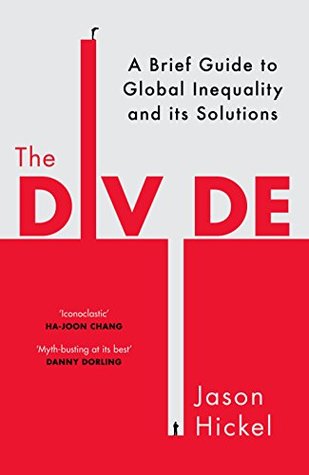More on this book
Community
Kindle Notes & Highlights
by
Jason Hickel
Read between
November 7, 2018 - December 6, 2020
Rich countries aren’t developing poor countries; poor countries are effectively developing rich countries – and they have been since the late 15th century.
Recent studies place this ‘ethical poverty line’ at about $5 per day – four times higher than the standard $1.25 line.
global poverty at a minimum of $5 per day? We would find the global poverty headcount to be about 4.3 billion people.
Over the past few decades inequality has become so bad that in 2000, Americans earned nine times more than Latin Americans, twenty-one times more than those in the Middle East/North Africa, fifty-two times more than sub-Saharan Africans and a mind-popping seventy-three times more than South Asians.
By the early 1800s, a total of 100 million kilograms of silver had been drained from Latin America and pumped into the European economy
Latin American region had a combined population of between 50 and 100 million.15 By the middle of the 1600s, however, the continent’s population had been slashed to 3.5 million.16 In other words, around 95 per cent had been killed.
By the end of the slave trade in 1853, somewhere between 12 million and 15 million Africans had been shipped across the Atlantic.
Without the ecological windfall from the slave colonies, Europe would not have been able to shift its economic capacity towards industrialisation.
Before the British arrived, India commanded 27 per cent of the world economy, according to economist Angus Maddison. By the time they left, India’s share had shrunk to just 3 per cent.
Desperate to finance their growing trade deficit, they started selling opium – grown in colonial India – on China’s black market.
Thus began the Opium Wars, fought by the British between 1839 and 1842, and by an Anglo-French alliance from 1856 to 1860. China, unprepared for naval combat, was brutally defeated.
China’s share of the world economy dwindled from 35 per cent before the Opium Wars to an all-time low of just 7 per cent.


